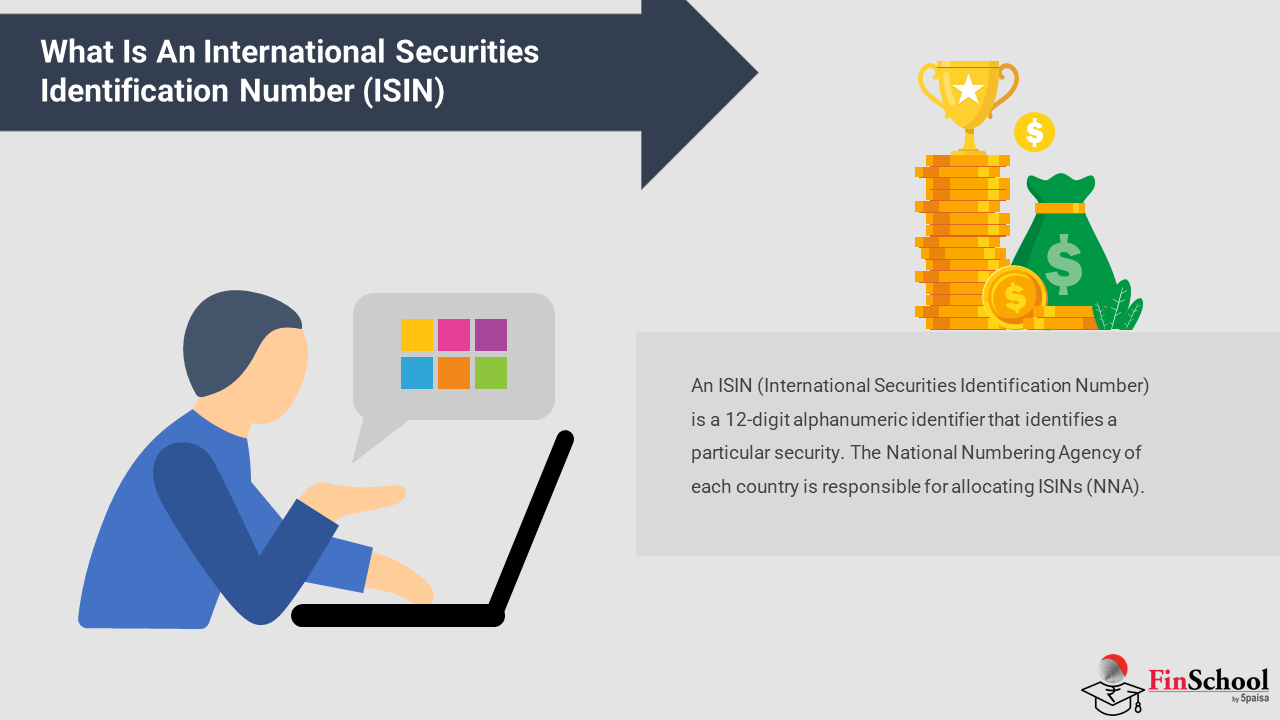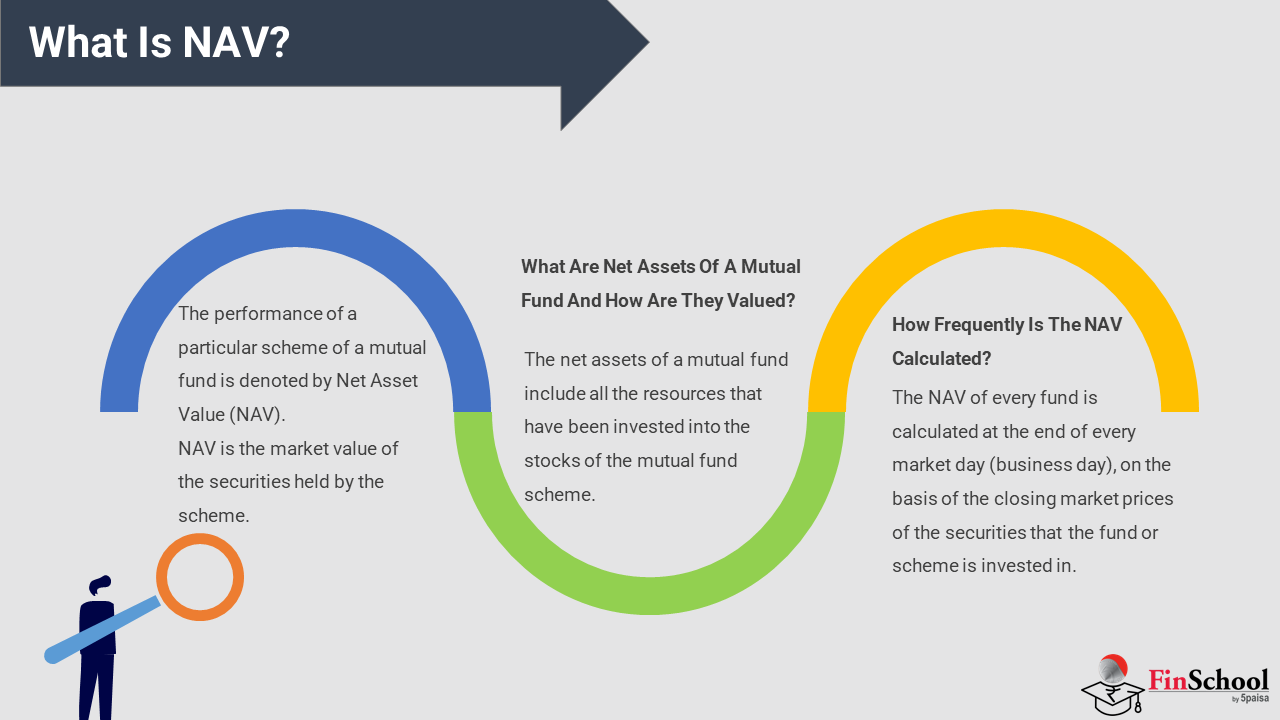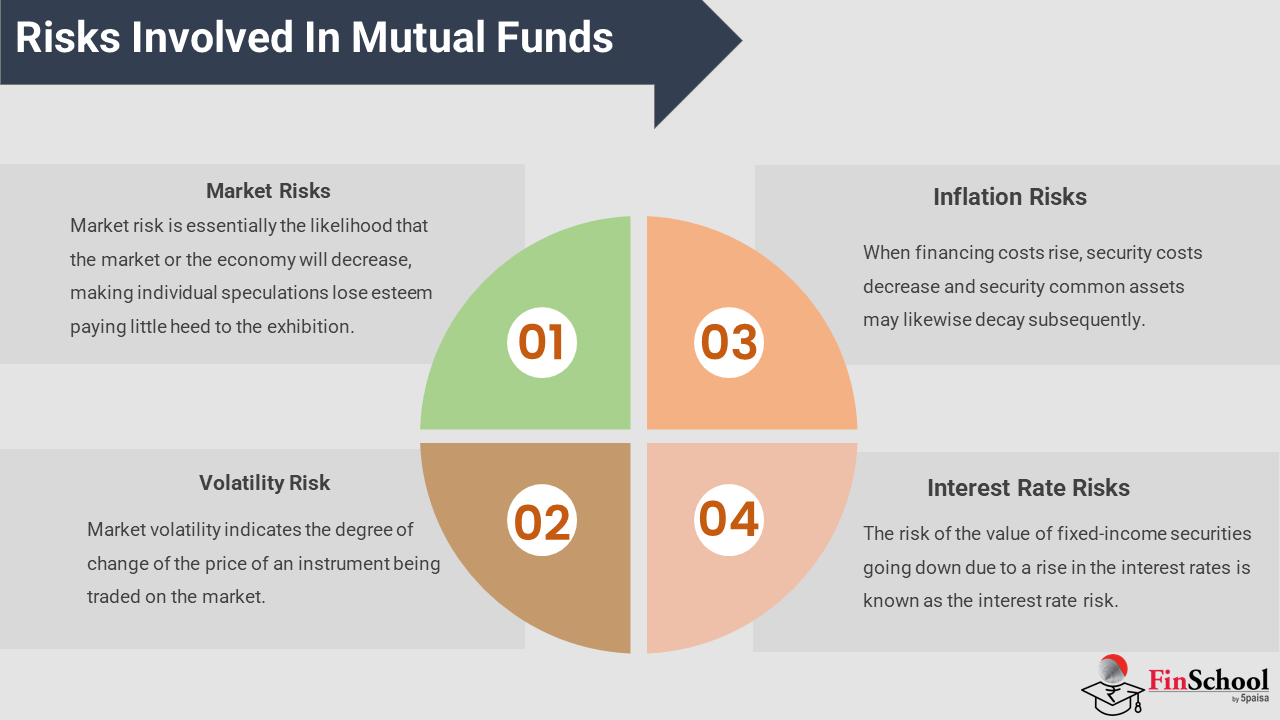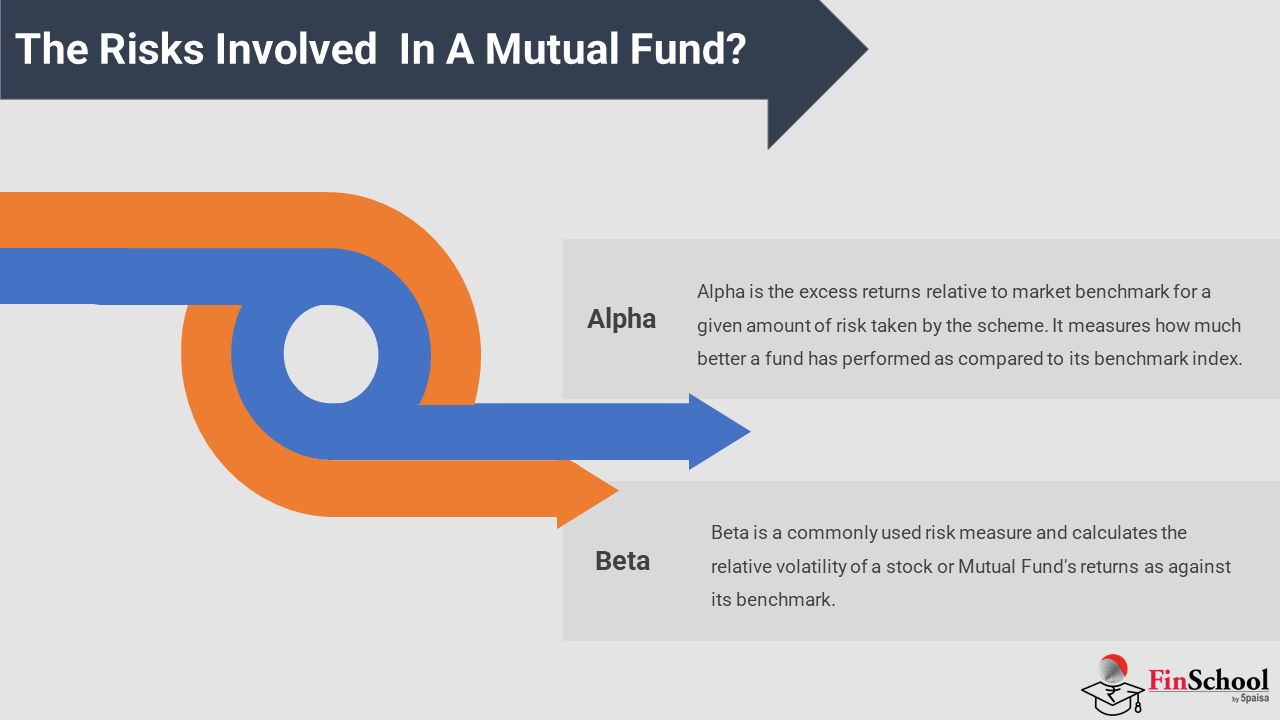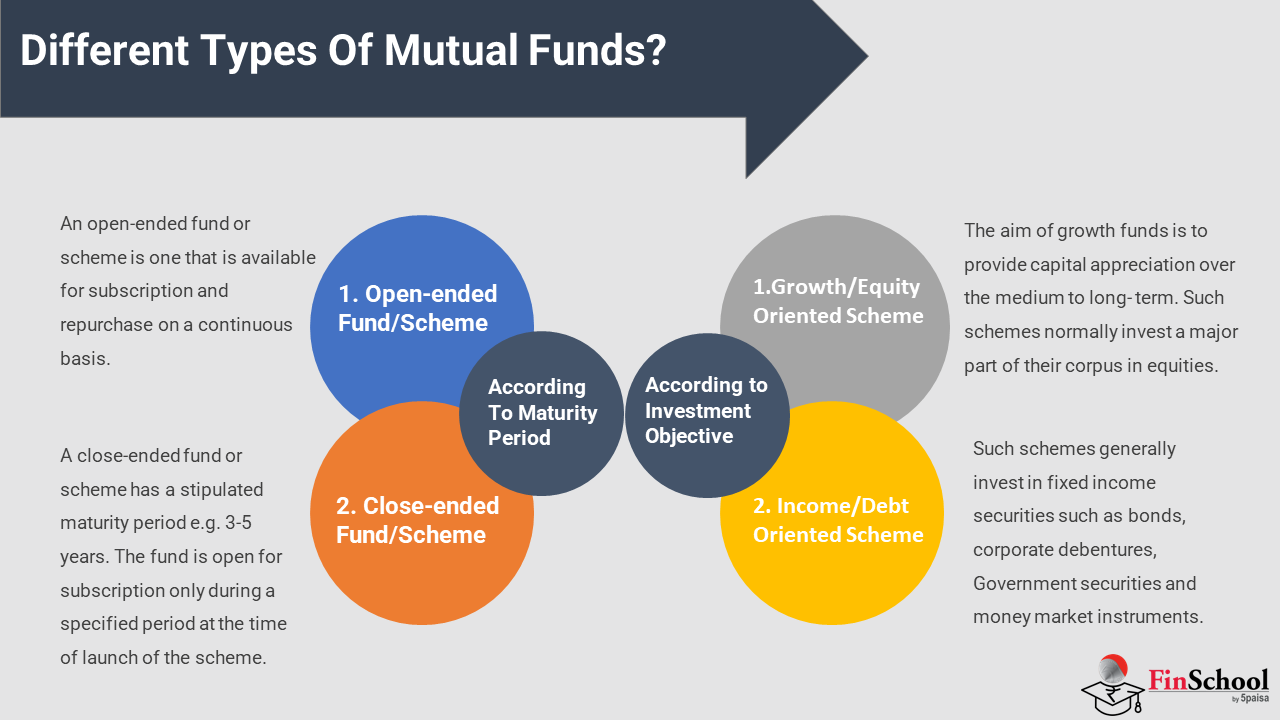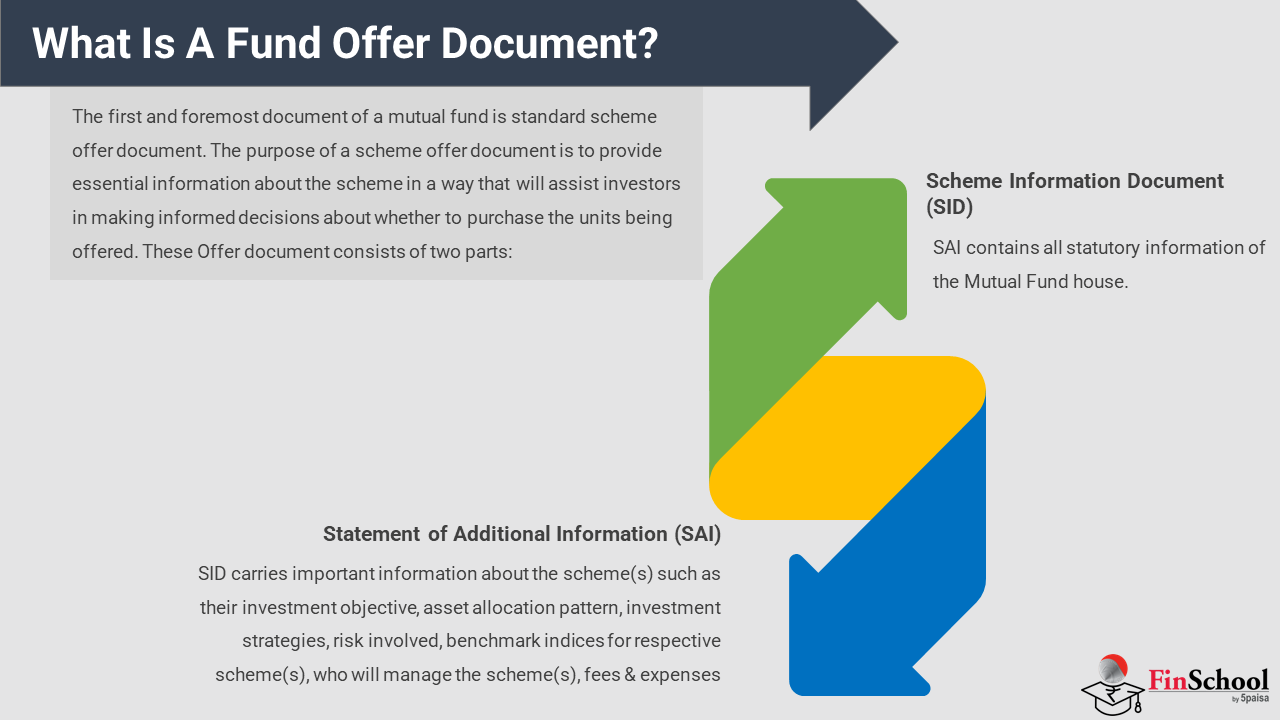- Study
- Slides
- Videos
5.1 Term Life Insurance
- What Is Term Insurance?
Term insurance is a basic financial security tool for an individual to park and save money to safeguard the future of the nominee(s) in case of any unforeseen event. It is basically a simple protection plan or pure insurance where a customer gets life coverage, which is normally a large sum of money for which a customer pays a premium over a given period of the life cover. A term insurance can help the insured to prepare for any eventuality arising from the financial stability that may occur if the breadwinner of a family passes away due to an illness, accident or unforeseen death.
How Does Term Insurance Work
Term plan is a traditional insurance plan that can be purchased by anyone; it is a basic financial instrument which should ideally be present in everyone’s investment portfolio. Any individual contributing financially towards the household and with dependent parents and other liabilities should opt for a term insurance as it offers a safety net in the event of the death of an individual.
Reasons to Buy Term Insurance
- Quantifying Protection
One of the primary purposes of a life insurance cover is to ensure financial support, including children’s education and other needs, to the immediate family in the absence of the breadwinner. An approximate corpus can be easily derived by doing the simple math of multiplying the annual income with the time left till retirement. According to experts, one should go for a term insurance cover that is at least 15-20 times of the annual income. Going by the tried and tested formula that industry experts recommend, if you have an income of INR 10 lakh per annum, your cover should be at least of INR 1.5 crore to INR 2 crore. One has to take into account the human life value to decide the sum assured or in simple terms life cover. Then the premium is determined depending on the age and tenure of the policy. The premium amount may also vary according to habits and health status of the individual. Smokers generally have to shell out a higher premium due to comparatively higher mortality risk. For such individuals, higher premiums may be applicable and in cases of adverse health conditions or severity of any lifestyle diseases, there is a possibility of the insurance application being rejected.
- Ideal Age for Protection
Prior to the coronavirus pandemic, it was common to find individuals with family responsibilities agreeing to insurance solutions for their families. This trend has seen a shift and the younger population of India is now seeking life cover for long-term protection for themselves as well. Specifically, millennials have emerged as more financially-savvy and aware of the advantages of taking a term plan at a young age. When a young individual takes a term plan, the premium amount is considerably lower and remains constant throughout the tenure of the plan.
Key Features of Term Insurance Plan
- Financial Freedom at Affordable Premiums:A term insurance guarantees maximum financial independence at a minimum cost. Its benefits provide cushion in case of death at premiums better than those offered for critical illness insurance plans, depending on your age.
- Easy to Buy:Buying a term insurance is a considerably no-sweat affair because everything you possibly need to know is available online. From finding a form, to a term insurance calculator to doing the math about the premium you need to pay based on your criteria, you can get online access to all the information you need.
- Essential Investment for the Future:Making monetary investments from a young age has huge significance in securing one’s future. And term insurance is one of the recommended types of investments that help in dealing with death.
- Flexible Payment Options:A term plan gives you the liberty to choose from a range of payment options such as monthly/quarterly/yearly payment, as per your convenience.
- Various Payout Options:If you are concerned about your family quickly spending all the payout, you can opt from various payment options. You can request the insurance company to dispense the money to the family on a monthly basis, much like a regular income.
- Wide Range of Customized Offers:Premiums of a term insurance are often customizable, and your age and habits play a decisive role on determining whether you are eligible for the offers. For example, a non-smoker has better chances of availing a rebate on premium, as opposed to a smoker. Being a female also guarantees additional advantages in premium rates.
Types of Term Insurance Plans
- While planning to purchase a term insurance plan, you will often come across a variety of options that might lead you to a pool of confusion. However, you need to make an informed decision.
- Make sure to do a thorough research on the available plans in the market and look for a plan that fits your current financial aspects, as well as your future requirements. Making it easier for the buyers, a lot of new-age term insurance plans are available with in-built features to cater to the evolving needs of consumers and their subjective requirements.
- For instance, some plans come with the provision to change the “sum assured”based on the changes in protection needs after the lock-in period. In most cases, there will be no alteration in your premium amount post increase or decrease in “sum assured” chosen by you.
- If the insured adds X to their plan after the lock-in period, their premium may remain the same but an additional benefit will be added with a slightly lower sum assured.
- Similarly, if the insured drops Y from their original plan after the lock-in period, their premium may remain the same but their sum assured may increase. The product brochure usually has detailed information on the terms and conditions applied in the increase or decrease of sum assured under these plans.
- Some new-age plans offer a reduction in premium aligned with a good health status of the life assured.
- As consumers, we have a tendency to expect to receive our capital investment at the end of the tenure. There is a variant of term plan available that returns the premiums paidto the consumer on survival till the end of the tenure. Such plans are more expensive than ordinary term plans that pay the sum assured only in the event of death.
- The best way to reap the benefits of a life insurance plan is to stay invested throughout the tenure. It is not advisable to exit an insurance plan prematurely as the life cover will cease and your family’s financial security may be jeopardized in case you die. It is recommended to continue with the purchased plan for the entire tenure for long-term financial protection.
- Most importantly, in the event of death, the insured person’s family will receive death benefit only if you continue the plan.
Important Considerations Before Buying Term Insurance
Some important things to keep in mind before finalizing your term plan include:
- Premium Evaluation
The premium should be competitive and one can compare for the same tenure, age and habits. The premium should be affordable throughout the policy tenure so that you’re not tempted to stop paying. One should decide the term of the policy keeping in mind the time horizon of the financial goals of the family. Protection should remain until the individual is free from all liabilities.
- Claims Settlement History
The claim settlement history of the insurer should be a critical parameter of selection. This is found by learning about the claims settlement ratio. Claims assistance support of the insurer is another criteria. Nobody would wish their families to run around from pillar to post to receive the claim during times of distress.
- Disclosure of Material Facts
The customer should declare all facts pertinent to the policy and should not conceal any vital information. Declaration of any adverse health condition or family history may rate up the premium but would ensure a hassle-free experience for the family during claim payments.
Importance of a Medical Test
It is common for a layman to avoid the hassle of a medical check for a life insurance cover. However, medical examination is an important process if called for. This is to reconfirm the health status of an individual as we may not be aware of an underlying ailment. Further, you have a lesser chance of getting the claim denied if you have undergone a medical test under instruction from the insurance company. Usually, medical tests are undertaken for a higher life coverage, age, and existence of any ailment or habits such as smoking.
5.2 Unit Linked Insurance Plan
Unit Linked Insurance Plan is a multi-faceted life insurance product. A ULIP plan is a combination of life insurance and investment. ULIPs requires you (as a policyholder) to make regular premium payments, part of which is utilized to provide life insurance coverage. The remaining is pooled with the assets received from other policyholders, and then invested in financial instruments (i.e. equity and debt), similar to mutual funds. Investment in ULIP means you can stay financially secure against emergencies and grow your money as well.
ULIP Plans Benefits
- Market Linked Returns
ULIP means an opportunity to avail of earn market-linked returns by allocating a portion of the premium invested into market-linked instruments such as debt and equity instruments (in varying proportions).
- Life Protection with Savings
Besides allocating a portion of the premium invested into market-linked instruments, Unit linked Insurance Plans (ULIP full form) also help protect you and your loved ones against any emergencies in life. Thus you can avail of market-linked returns, while the ULIP plan takes care of your protection needs. With the need of protection against life’s eventualities out of the way, you can develop a regular habit of saving and investing and build substantial wealth over the long term with ULIP plans
- Flexibility
ULIP or Unit Linked Insurance Plans (ULIP full form) help you achieve your financial objectives by providing the flexibility to –
- Switch between investment funds based on your changing needs
- Make partial withdrawals after the completion of the initial 5-year lock-in period
- Single premium additions to help you invest additional sums of money (alongside the regular premium paid) as and when desired.
- Level Paying Premiums
Under a ULIP plan, all regular premium or limited-term premium payments shall have a uniform or level premium payment structure. Any additional payments of premium are treated as a single premium, to provide life insurance cover.
- Even Distribution of Charges
According to IRDAI, the charges levied on ULIP plans are evenly distributed during the 5-year lock-in period, to help ensure that the insurers eliminate the high front-ending of expenses. Make sure you understand what is ULIP plan charges that you will be paying, before investing your money.
- Tax Benefits
The premium paid towards the ULIP plans is eligible for tax deduction under Section 80C of income tax 1961, up to a maximum of Rs. 1.5 lakh. At the same time, the maturity/death benefit received under the ULIP plan is tax-exempt under Section 10(10D) of the Income Tax Act 1961.
How to Choose the Best ULIP Plan?
Once you understand what is ULIP plan, the next step is to choose the best-suited policy for you since there is a variety of options available. So, before you invest in a ULIP plan, you must consider comparing and evaluating to choose the best ULIP plan available in India. Following are some of the key points to keep in mind while choosing the best ULIP plan:
Evaluate Your Goals
- Choose the Right Life Insurance Cover Amount
- Stay Invested for an Extended Investment Tenure
- Avail Maximum Tax Benefits u/s 80C & 10 (10D)
Which Investor Class Are ULIPs Most Suited For?
- Individuals who want to track their investments closely
A ULIP plan allows you (as the policyholder) to closely monitor your portfolio. Such individuals may also benefit from the switching flexibility offered by ULIP plans, thorough which they can adjust capital allocation between funds options with varying risk-return profiles. ULIP means more control over your financial planning, including investment and insurance decisions.
- Individuals with a Medium to Extended Investment Horizon
ULIP plan is ideal for you if you are willing to stay invested for relatively long periods.
- Individuals with Varying Risk Profiles
ULIP plans offer a variety of funds options – each with varying risk-return profiles. Thus, investors with different risk profiles (from risk-averse investors to those with healthy risk appetite) must understand what is ULIP plan funds available before investing, so they can keep appropriate return expectations.
- Investors across All Stages of Life
Different types of ULIP plans are available to help you protect yourself and your loved ones against financial needs and liabilities at specific points in time.
Fund Option Under ULIPs
Some of the most common investment options available under ULIP plans are –
a) Equity Funds
In an equity fund of ULIP plans, the allocated investment amount is used to purchase stocks, which have a Net Asset Value (or NAV) associated with them. NAV is the price per share (or ‘unit’) in a Fund. As the ULIP full form suggests, ULIP plan is a market-linked instrument, so the investments in equity carry high inherent risk because of market fluctuations. However, equity investments can also be the most rewarding.
b) Debt Funds
The premium allocated towards debt funds is used to invest in instruments such as Government Bonds, and debentures, which offer a lower risk than equity investments. Compared to equity investments in ULIP plans, however, debt funds may offer a lower return on investment.
c) Hybrid or Balanced Funds
Under ULIP plans, Hybrid or Balanced Funds are designed to provide capital growth (from the equity component) while ensuring lower risk (due to the debt component.) In case of market fluctuations, thus, any loss that you incur from the equity portion is balanced out by the lower risk yet consistent returns from the fund’s debt portion. Understanding what is ULIP plan and your investment objectives carefully will allow you to make sound choices.
5.3. Whole Life Insurance
What is Whole Life Insurance?
As the name suggests, a whole life insurance plan offers financial security and insurance coverage for the rest of your life. This type of insurance protects you and your loved ones by providing you with a life cover! for up to 99 years. This can safeguard the financial interests of your family in your absence.
Types of Whole Life Insurance Policies
Whole life insurance can be categorized into the following types:
1. Limited Payment Whole Life Insurance
If you select limited payment whole life insurance, you need to pay the policy premium for a limited period during the policy term. In most cases, you can pay the premium for the first 10 or 20 years and continue to enjoy policy coverage for a lifetime. The premium may be relatively high for these plans as you have a limited period to pay the premium but the overall savings on premiums would be higher than a regular payment life insurance plan.
2. Single Premium Whole Life Insurance Policies
If you select single premium whole life insurance, you pay the premium in a lump sum as a one-time payment at the time of purchase. Moreover, your coverage remains constant for the entire policy term and the nominee enjoys uninterrupted financial protection.
3. Modified Whole Life Insurance
If you select modified whole life insurance, you pay varying amounts at different intervals of the policy term. In most cases, the premium is relatively low at the beginning of the tenure and gradually increases with time. However, irrespective of the premium amount, your policy coverage and benefits stay the same for the whole term.
4. Variable Whole Life Insurance
A variable whole life insurance policy offers life cover for the entire policy term, protecting your loved ones against any financial contingencies in your absence. Additionally, it also helps you meet your investment goals by investing your money. You can invest in this plan to enjoy tax benefits, build savings, and ensure financial protection for your loved ones.
5. Joint Whole Life Insurance
A joint whole life term insurance covers two people instead of one. The premium is paid for both policy owners, and the sum assured is offered for both lives. The insurance payout is given on a first-death basis. These types of plans are suitable for couples planning to save for the financial needs of their children in their absence.
Benefits of Buying Whole Life Insurance
- Whole Life Cover– The policy covers you for 99 years. This protects your family for an extended period of time. Many people have financial dependents even in their old age, and such a policy can take care of their financial dependents
- Level Premium– Your premiums remain fixed for the entire term of the policy, allowing you to benefit from an amount that will become lighter on your wallet over time. You also have certainty about the premium amount and hence can plan your expenditure accordingly
- Tax– The insurance premiums paid are eligible for deductions of up to ₹ 1.5 lakh under Section 80C and the maturity amount is exempt from tax#subject to Section 10(10)(D).
5.4. Endowment Plans
What is Endowment Insurance Plan?
Endowment plans refer to the life insurance policies that offer risk cover to the policyholder under the unfortunate event and a maturity benefit at the end of the policy term. The policyholders are paid a lump sum after a specific period called the maturity period. The insurance company will pay the assured amount to the policyholder’s nominees in case of the holder’s death or the holder themselves on a fixed date.
Why Must You Apply for an Endowment Plan?
Now that you know what is endowment plan in insurance is, let’s get into the details regarding why you must apply. An endowment plan offers apparent benefits to the policyholders. When the endowment insurance policy matures, the policyholder has a pool of savings. They can either reinvest the amount, use it for their personal needs or enjoy life post-retirement. Therefore, an endowment policy is almost risk-free and offers a steady amount on a fixed date as long as the premium is paid.
Benefits of an Endowment Plan
Below mentioned are some of the benefits of an endowment plan:
1. Maturity Benefit
Under the endowment life insurance plan, the policyholder gets a substantial amount at the end of the term when their policy matures.
2. Death Benefit
This is the money that your loved ones/ nominee receive once they claim for it in case of your untimely death. It is just like a life insurance policy cover.
3. Tax Benefits
Endowment insurance plans also offer tax benefits to the policyholder. The premiums paid for the policy can help you reduce your taxable income per India’s Income Tax laws. Endowment plans with a maturity period of 15 to 20 years are more profitable since you can quickly accumulate more money over a more extended period. In addition, the amount paid on the maturity can then be used to fund significant expenses in the future. Some plans even offer guaranteed returns and bonuses to the policyholder in addition to the sum assured, which is added to the policy holder’s account every year. These benefits and the tax savings make the life insurance endowment policy an extremely appealing investment instrument. If you are looking for a low-risk plan with the dual benefit of insurance and investment or for a plan with a long-term investment perspective that gives you a lump sum amount in the end, then a savings endowment plan is suitable.
5.5. Child Plans For Education
What Are Child Education Plans And How Do They Work?
Child Education Plans or Child Plans are investment cum insurance policies provided by insurance companies. These are marketed as investments that allow parents to save for their children’s higher education expenses over the policy term while additionally providing financial security to the child in case of the parent’s untimely death. A portion of the premiums paid for the plan is used to provide life cover, while the remainder is invested in Equity or Debt instruments to help save for the higher education requirements of the child. In the case of a Child Education Plan, the life insurance coverage is extended to the parent. These insurance plans mature, and the final payout occurs when the child turns 18.
Types Of Child Education Plans
Child Plans can be classified into 2 different categories based on the type of payout being offered. These are:
1. Child ULIP Plans
These Child Education Plans provide a lump sum payout at the end of the policy term. While the maturity proceeds of these plans can be used for any purpose, the primary goal is to provide funds for higher education expenses of the child for whom the plan is purchased. Child ULIPs invest in Equity and Debt securities similar to other Unit Linked Insurance Plans (ULIPs). The only difference between a Child Education Plan ULIP vs. other ULIPs is in the tenure offered. While standard ULIPs are offered with policy terms ranging from 10 years to 25 years, the payout of a Child Education Plan ULIP occurs when the child turns 18.
2. Child Endowment Plans
This type of Child Education Plan provides life insurance cover and guaranteed returns. These plans typically make 4 payouts equal to 25% of the sum assured plus applicable bonuses starting after the child reaches 18 years of age. Due to guaranteed returns, this type of Child Policy features a low degree of risk. However, returns offered by these schemes are often relatively low.
Key Features of Child Education Plans
1. Life Insurance Cover
Child Education Plans have life insurance cover built into it, and the sum assured is up to 10 times the annual premium paid. This life cover limit is as per the guidelines provided by India’s insurance industry regulator, the Insurance Regulatory and Development Authority of India (IRDAI). So the life cover limit for a Child Plan with an annual premium of Rs. 50,000 will be Rs. 5 lakh.
2. Investment Options
In the case of Child Endowment Plans, policyholders have no scope to select specific asset classes to invest in. Insurance companies automatically choose the investment on behalf of policyholders, and these are typically Debt investments such as Government Bonds, Corporate Bonds, Treasury Bills, etc. On the other hand, Child ULIP Plans offer some choice to policyholders regarding where the money will be invested. However, the number of funds to choose from is limited to the list of funds managed by the Insurer. For example, the SBI Smart Scholar allows the policyholder to choose from a list of 9 funds, while ICICI Smart Kid Solution offers 13 fund options across Equity, Debt, and Hybrid Fund categories.
3. Lock-in Period
Both types of Child Education Plans currently offered in India are currently offered with a lock-in period of 5 years. From the 6th year onwards, partial withdrawal is allowed in the case of most Child Plans. The policyholder may also decide to surrender the policy and withdraw all investments after the 5-year lock-in is completed.
4. Charges
Child Education Plans have various charges that need to be paid by the policyholder. These include fund management charges, premium allocation charges, policy administration charges, etc.
5. Tax Benefits
Because of the life insurance component, premiums paid to keep the child policy in effect provide tax deduction benefits under Section 80C. However, there is a maximum limit of Rs. 1.5 lakh u/s 80C in total, which includes other popular tax-saving instruments such as Tax Saver ELSS Mutual Funds, Public Provident Fund (PPF), Employees’ Provident Fund (EPF), Life Insurance Plans, etc. The payout obtained from these plans is tax-free as long as the annual premium paid is less than Rs. 2.5 lakh annually. If the annual premium paid exceeds Rs. 2.5 lakh, the payout received will be subject to applicable Capital Gains taxation rules. This provision has been introduced in the Finance Bill, 2021.
Limitations of A Child Education Plan
At first glance, a Child Education Plan seems to provide key benefits such as life insurance cover, growth of capital as well as tax benefits in a single package. But a closer look reveals a number of limitations that one needs to consider before choosing this type of policy:
- Low Life Cover
The life cover provided by Child Plans is limited to 10 times the annual premium payable for the scheme. So for an annual premium of Rs. 50,000 the life cover offered by a Child Education Plan will only be Rs. 5 lakh. This limited life cover is almost like not having a life cover at all, and term plans offer a significantly higher cover at a fraction of the cost.
2. Diversion Of Premium Paid
Not all of the premium paid for a Child Education Plan actually gets invested. This is because a portion of the premium is allocated towards providing life cover to the insured individual. As the invested amount is lower than the actual premium paid and various charges are also deducted from the premium payments, the potential payout from Child Education Plans gets reduced.
3. Few Investment Choices
Policyholders have limited options regarding where their money gets invested when they opt for a Child ULIP. The investment choices are limited to a small number of funds offered by the Insurance Company. Moreover, in the case of Child Endowment Plans, it is the insurer and not the policyholder who decides the asset classes where the investments will be made. This restricts the choice of policyholders when it comes to selecting how and in which instruments the investments will be made.
4. Limited Flexibility
Child Education Plans are offered with a lock-in of 5 years during which no withdrawals can be made. Subsequent to completion of the lock-in, the policyholder has the option to either surrender the policy or continue with the existing plan. Moreover, the terms of the policy, such as premium payable, life cover, etc. of the existing Child Education Plan cannot be altered once the plan is in effect. This limits the flexibility of these insurance policies.
Should One Invest In A Child Education Plan?
- As a result of the various limitations of Child Education Plans, it is more appropriate for most investors to opt for investment and a term insurance plan separately. This way, one can get substantial life cover at a low cost along with a significantly wider range of investment options. One investment option that can be ideal for long-term financial goals such as a child’s education is Equity Mutual Funds.
- Opting for Equity Mutual Fund investments via the Systematic Investment Plan (SIP) route can be a viable alternative to Child Education Plans. Using SIP, parents can make relatively small investments over the long term to accumulate sufficient funds for their child’s higher education. What’s more, over an investment tenure of 7 years or longer, the potential of Equity Mutual Funds to deliver inflation-beating returns is significantly higher than that of Child Education Plans.
- Apart from this, investors also have the option to review the performance of their investments periodically and make appropriate changes as necessary without any penalties. While some might be inclined to opt for a Child Plan simply because of the tax benefits on offer, it must be kept in mind that ensuring that one has enough funds for children’s higher education should be the priority. Tax benefits should never take precedence over reaching the financial goal that is being targeted through an investment. However, those seeking tax benefits can opt for ELSS Tax Saver Mutual Funds, which have a shorter lock-in period of 3 years as compared to Child Education Plans.
5.6. Retirement Plans
The insurance based retirement plans are the combination of pension income and death benefit both. These plans are offered by various insurance companies and can be availed directly by the individual. Hence they are also known as personal pension plans. The major types of pension plans are as below:
1. Deferred Annuity Retirement Plan
Under such a plan, you can begin receiving a pre-decided pension amount every month, once you attain the specific age. While you subscribe to such plans, you will have an option to select a debt plan (low risk product) or capital market plan(equities and bonds). The debt plan is suitable for conservative investors/ The capital market plan is expected to give high return, with higher exposure to the market risk.
The key feature of deferred annuity is the wealth accumulation through power of compounding. Due to the waiting period, your corpus gets the time to grow. After the waiting period is over, you will get a higher pension amount, even if your original subscription was very small.
2. Immediate Annuity Plan
This plan is most suitable for those who have recently retired with lump sum retirement benefits like gratuity, leave encashment, bonus and other similar proceeds. The retired person can park the lump sum amount to purchase an immediate annuity plan that gives you a regular pension amount from very next month.
The key advantage of this plan is proper management of your retirement benefits. Once you retire from a long service, you will receive a lump sum amount, that is quite larger than your monthly salary. Hence there is a tendency to utilize this money for unproductive purposes. Later on, you may end up with shortages of funds to meet your daily, routine expenses. The immediate annuity plan is the perfect answer to avoid this situation. You can park your entire retirement proceeds safely to buy an immediate annuity plan and ensure your monthly pension income for the entire lifespan.
3. Pension with insurance cover
These plans are the combination of regular monthly pension and life cover. Upon the unfortunate death of the policy holder, the nominee receives death benefits from the insurance company. The subscriber gets pension income till his or her lifespan.
4. Pension without insurance cover
These plans are plain pension plans, that provide you income till your lifespan. However, no death benefits are covered under these plans. The key benefit is, these plans are available at substantially lower cost as compared to combination plans. If you have already availed other insurance cover like term insurance with sufficient sum insured, you can opt for this plan and ensure regular pension after your retirement.




